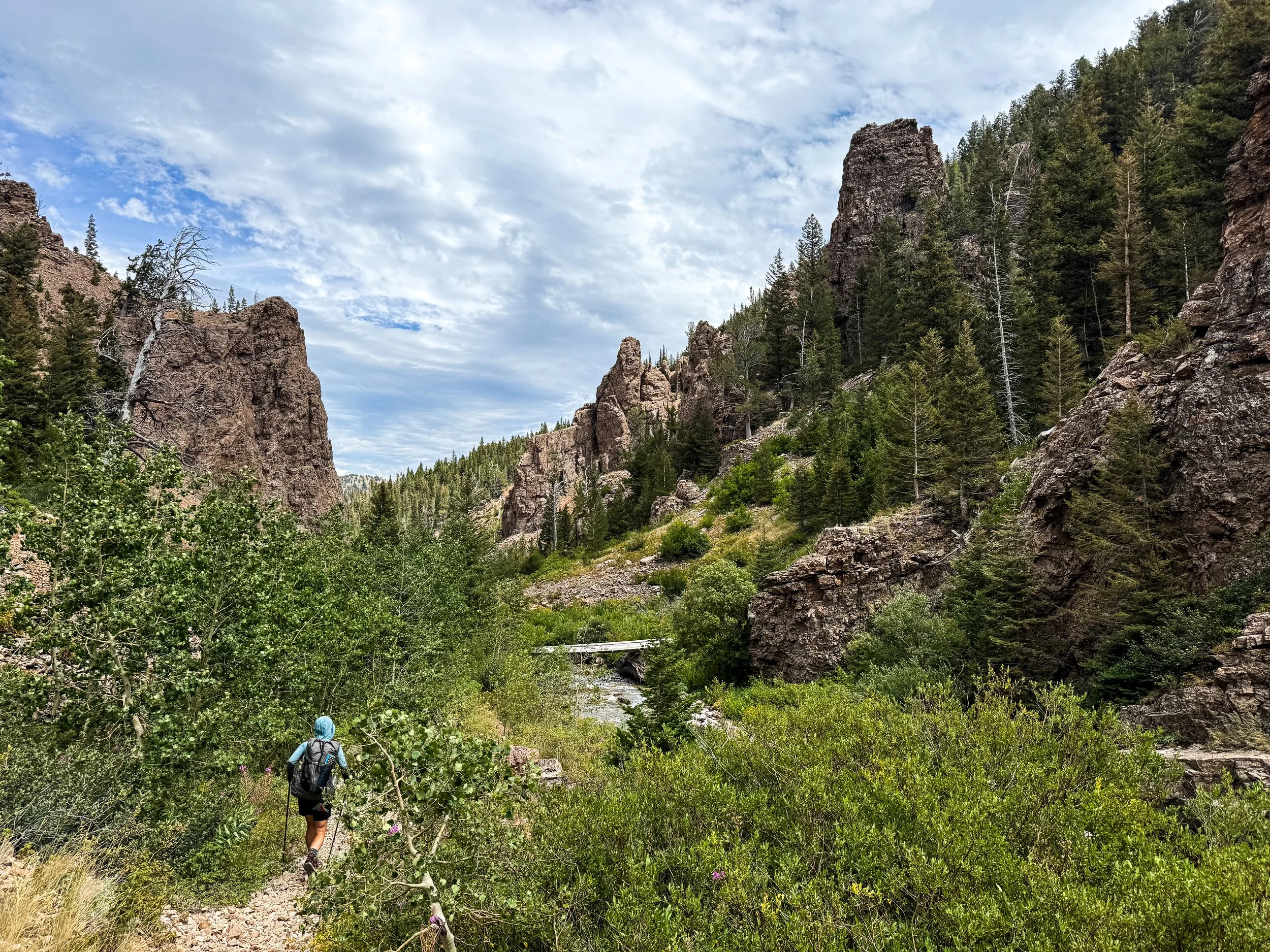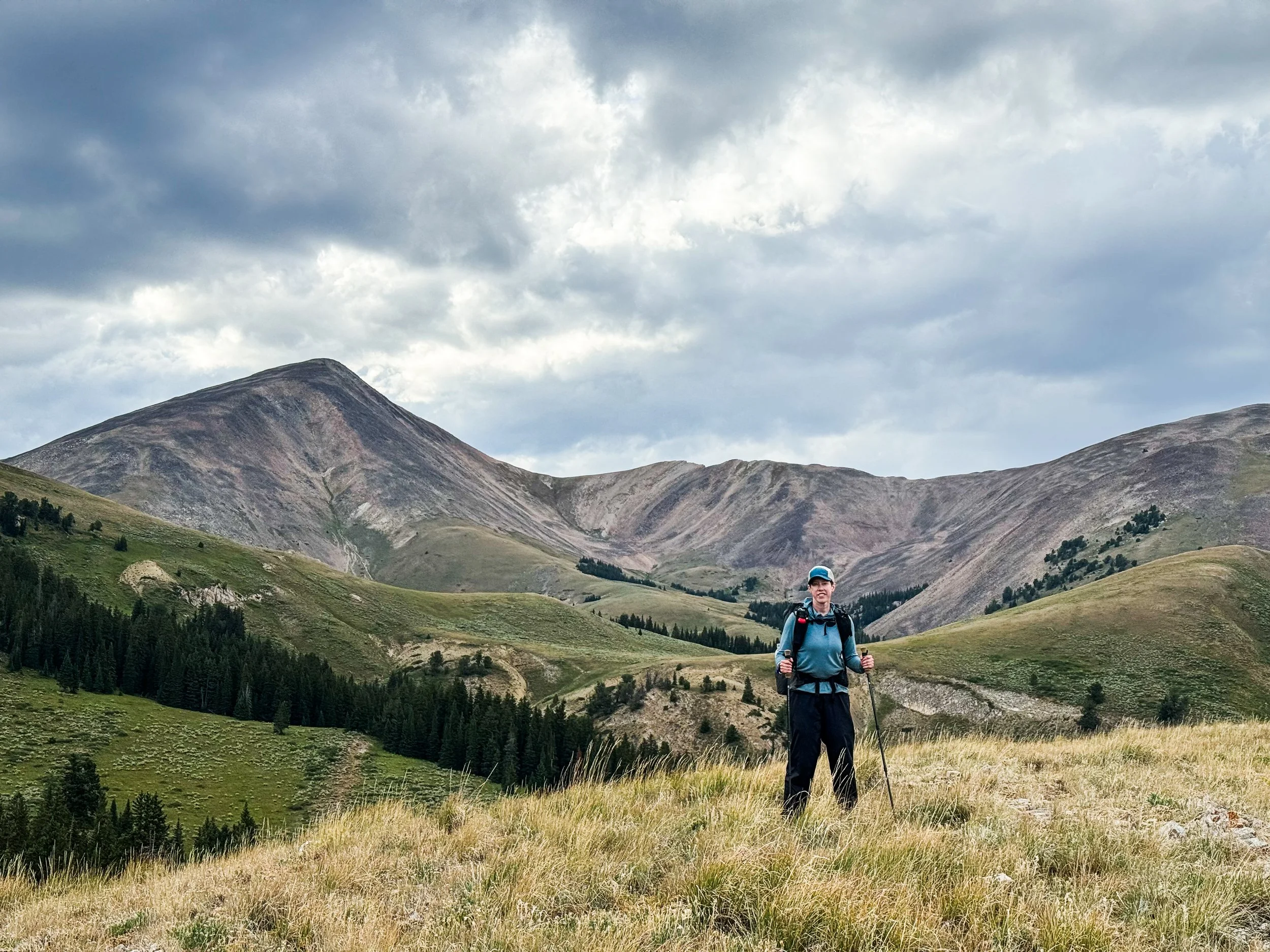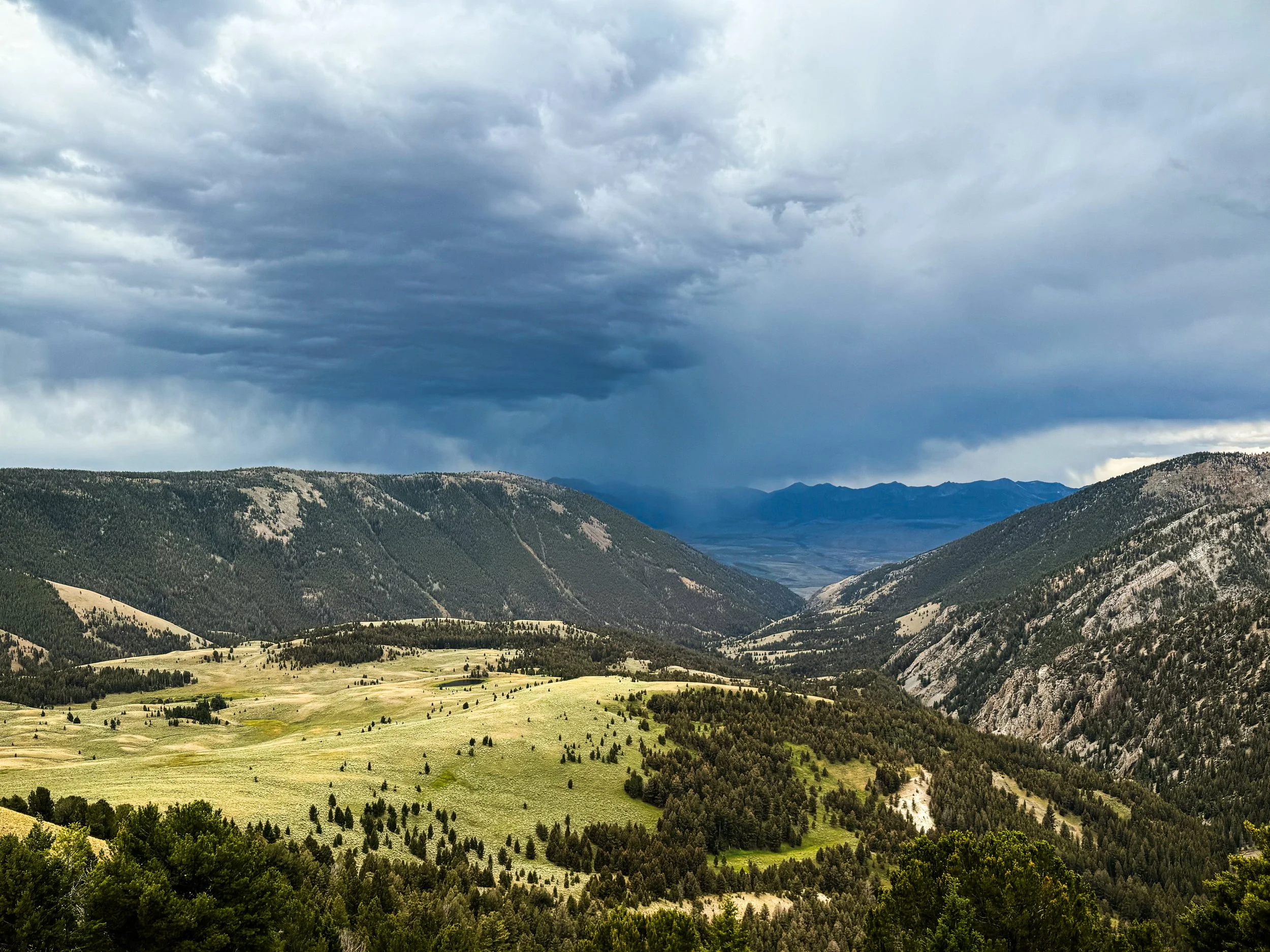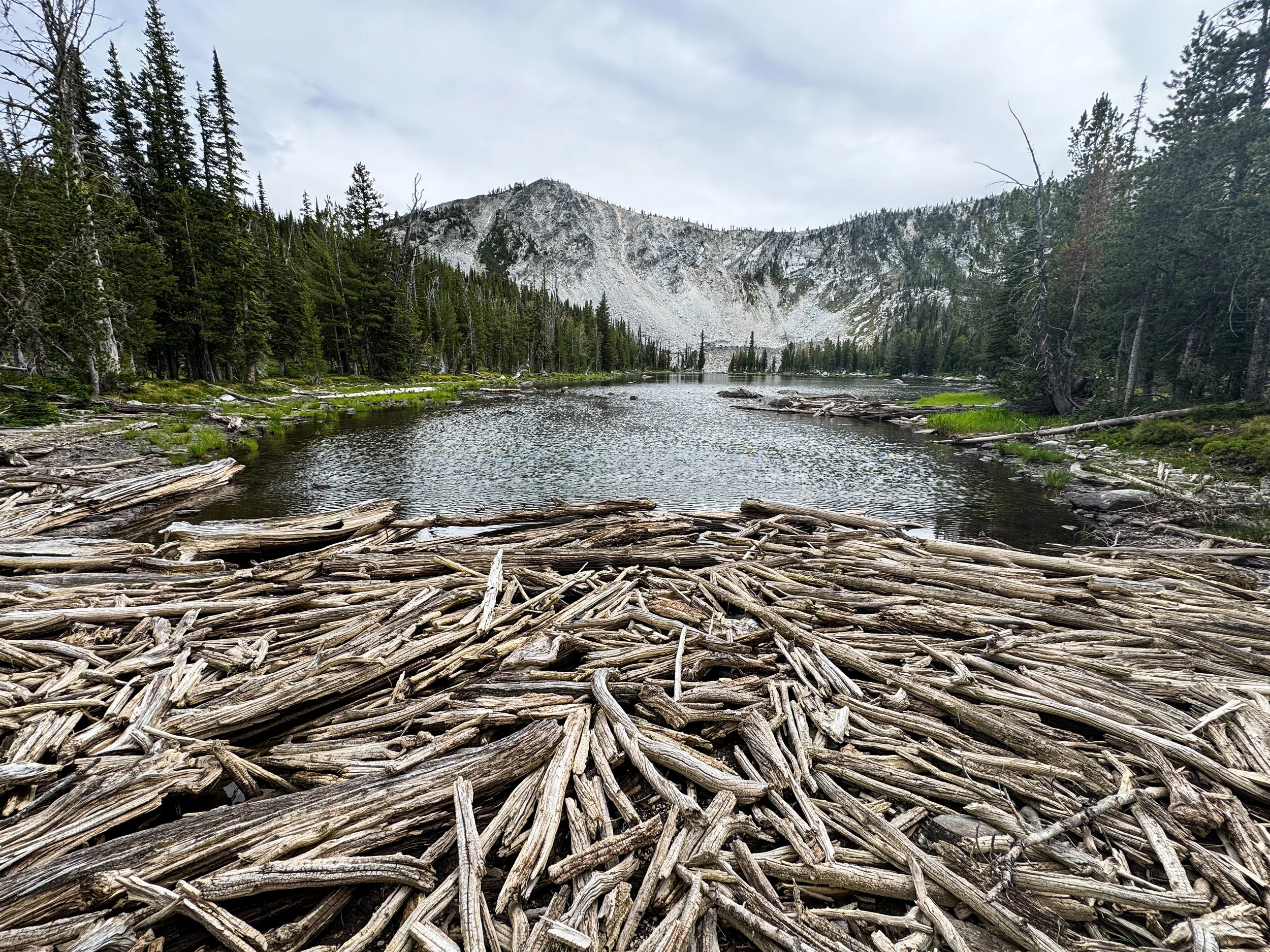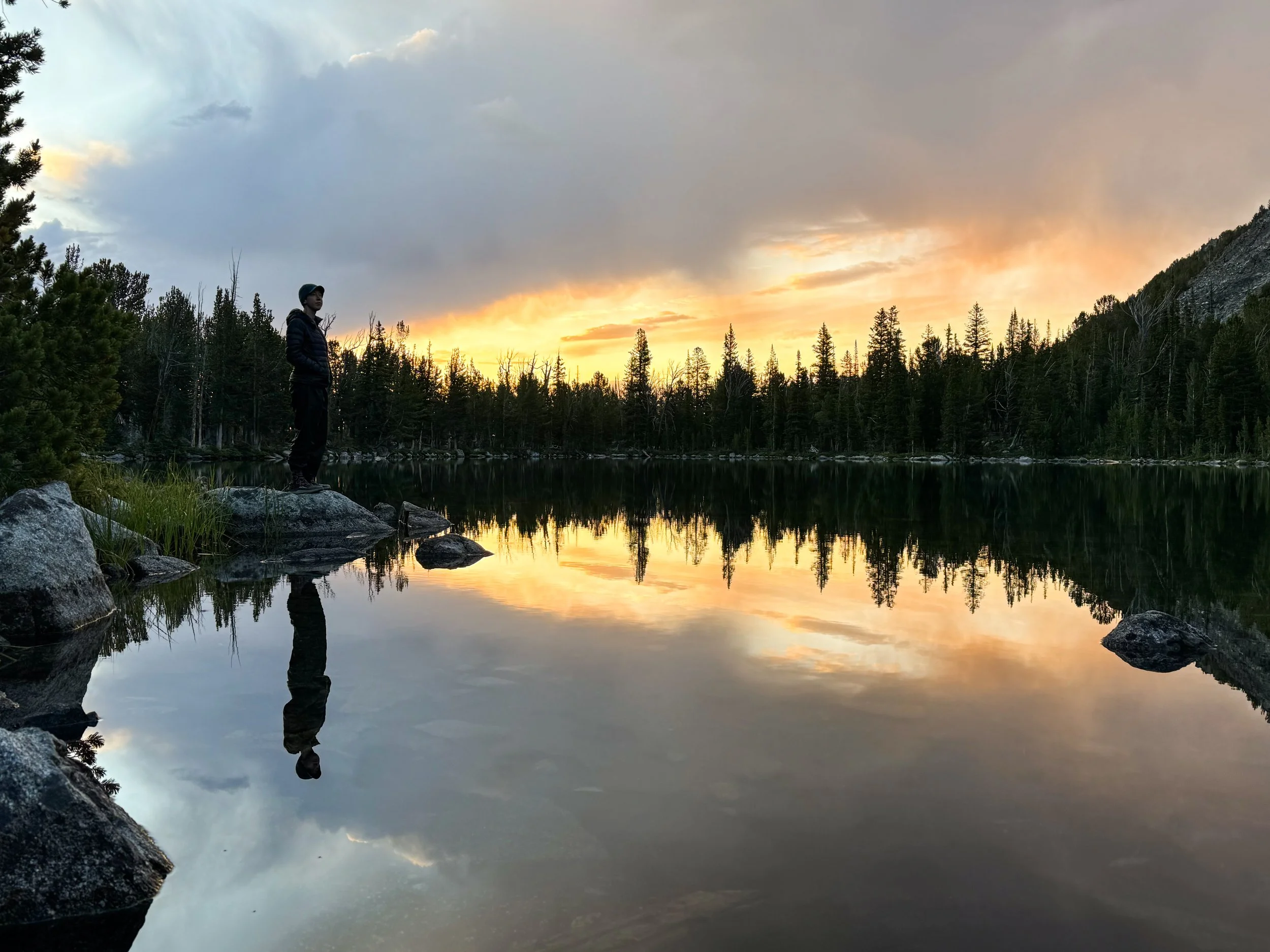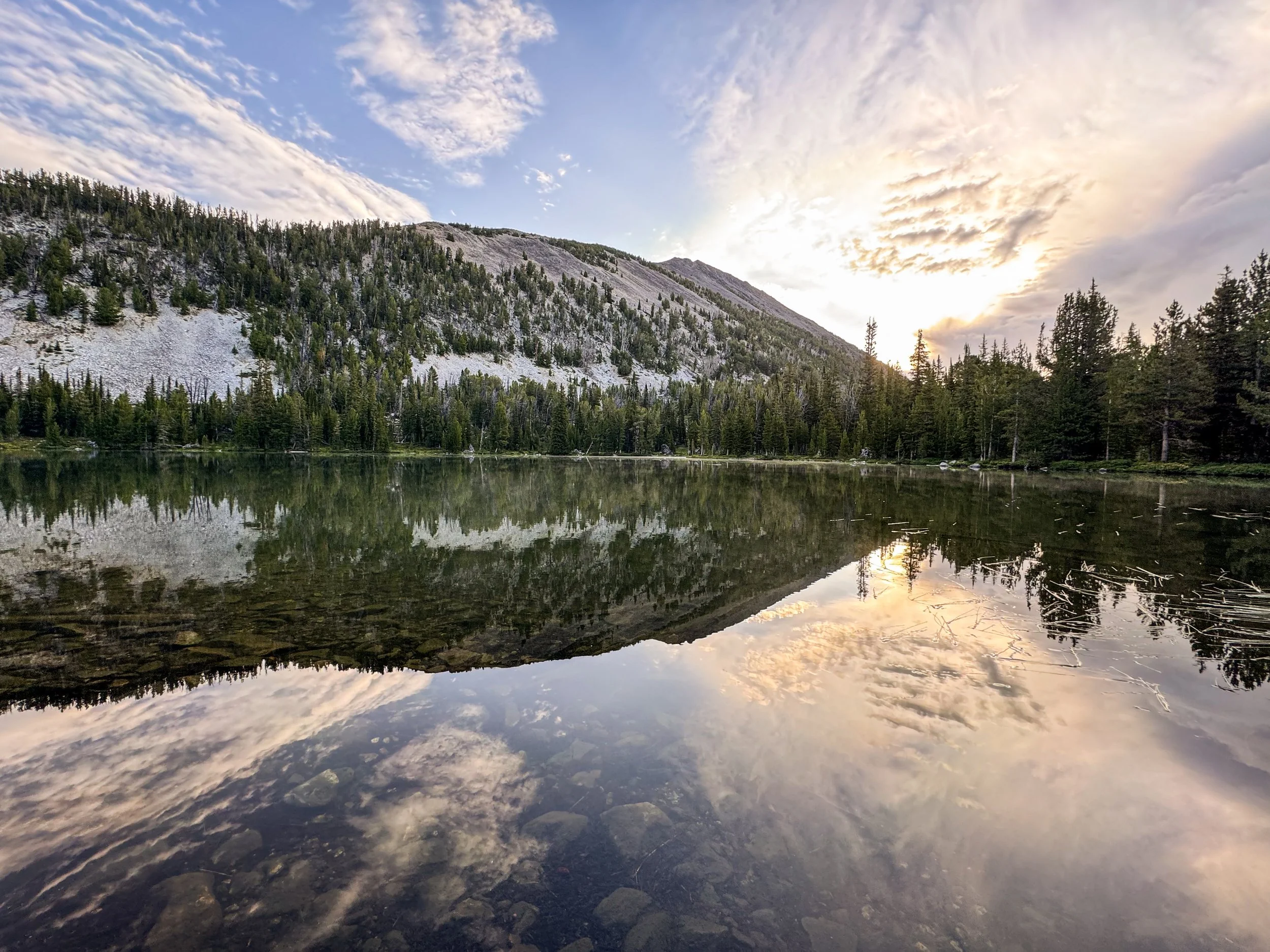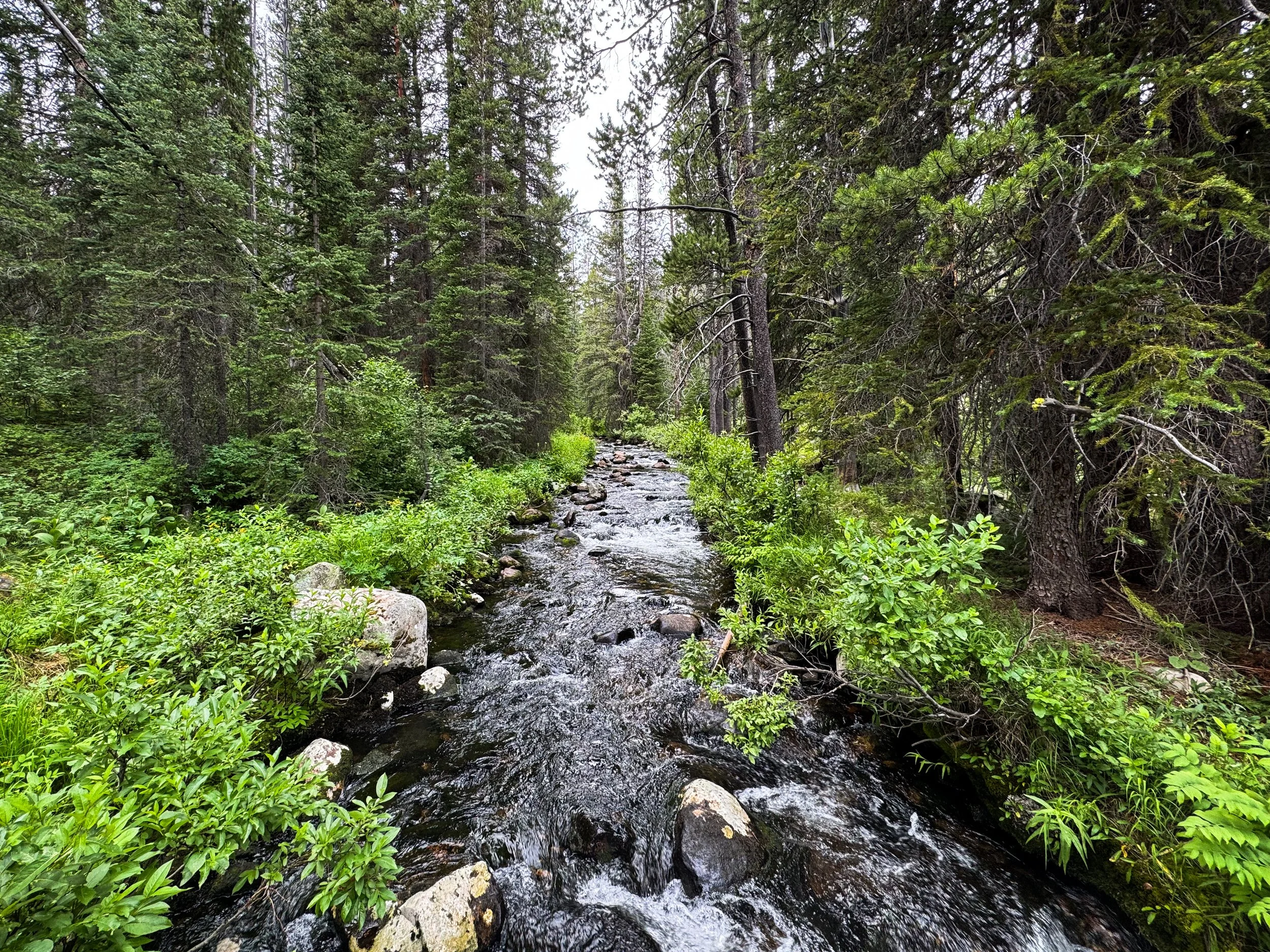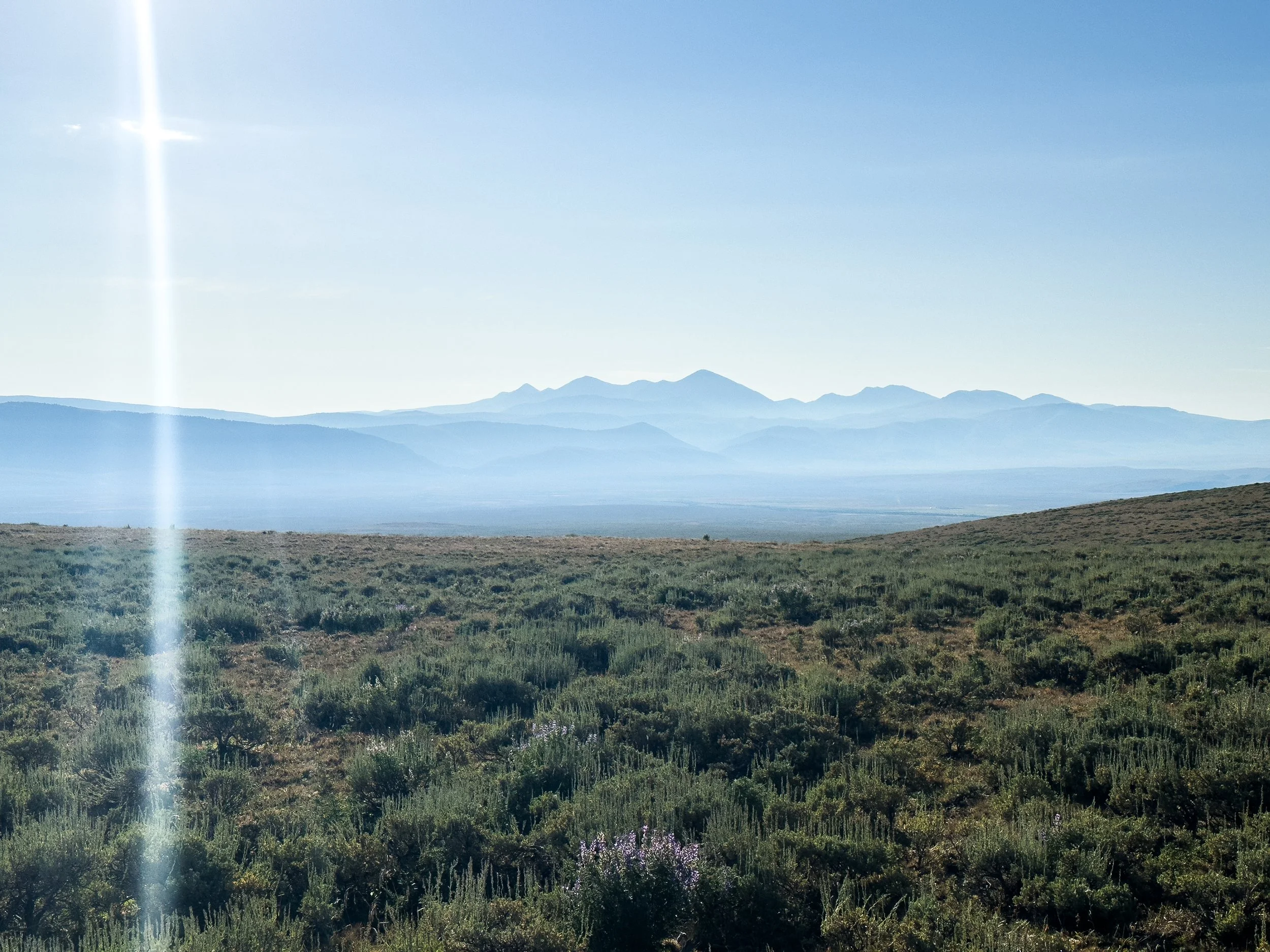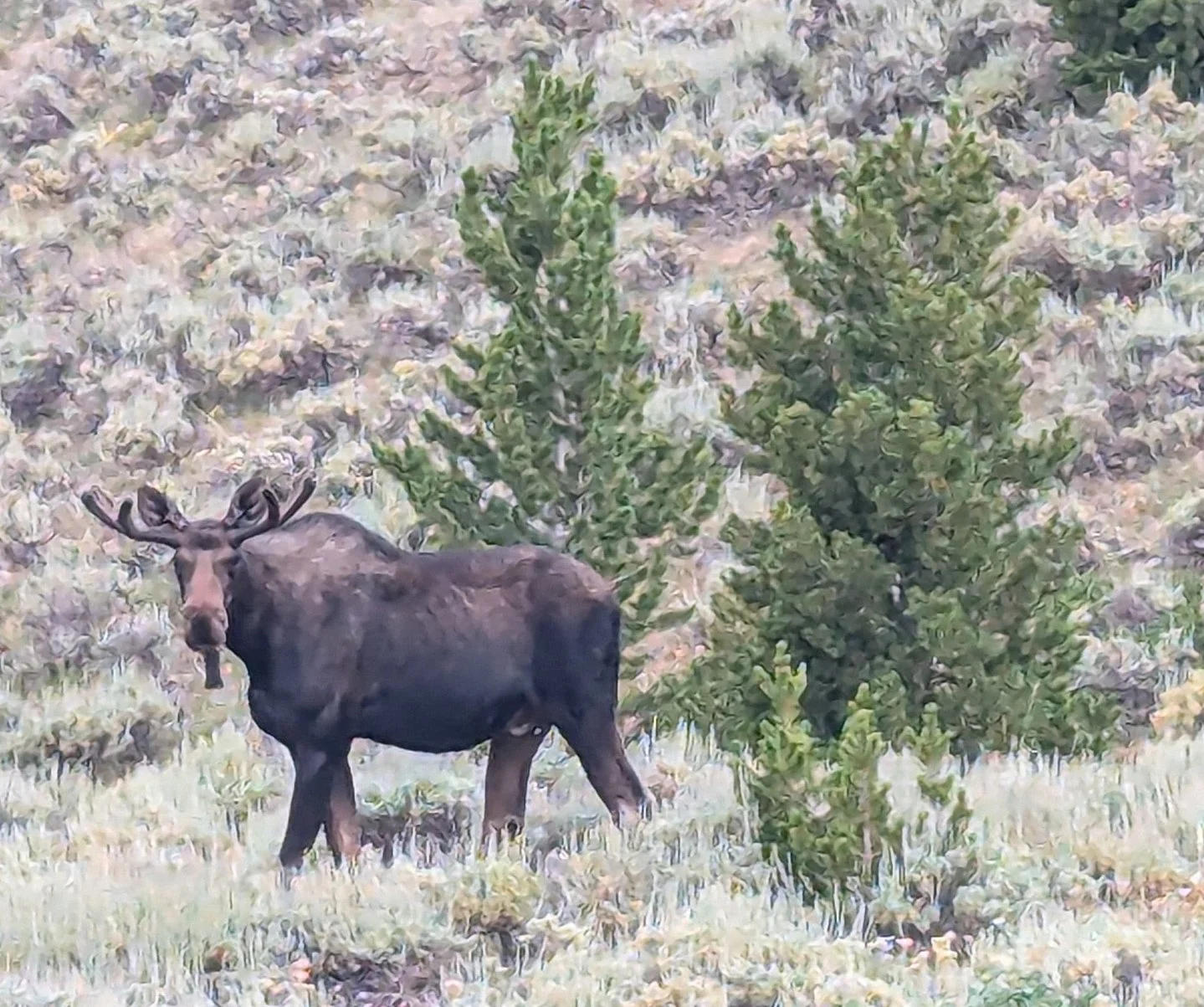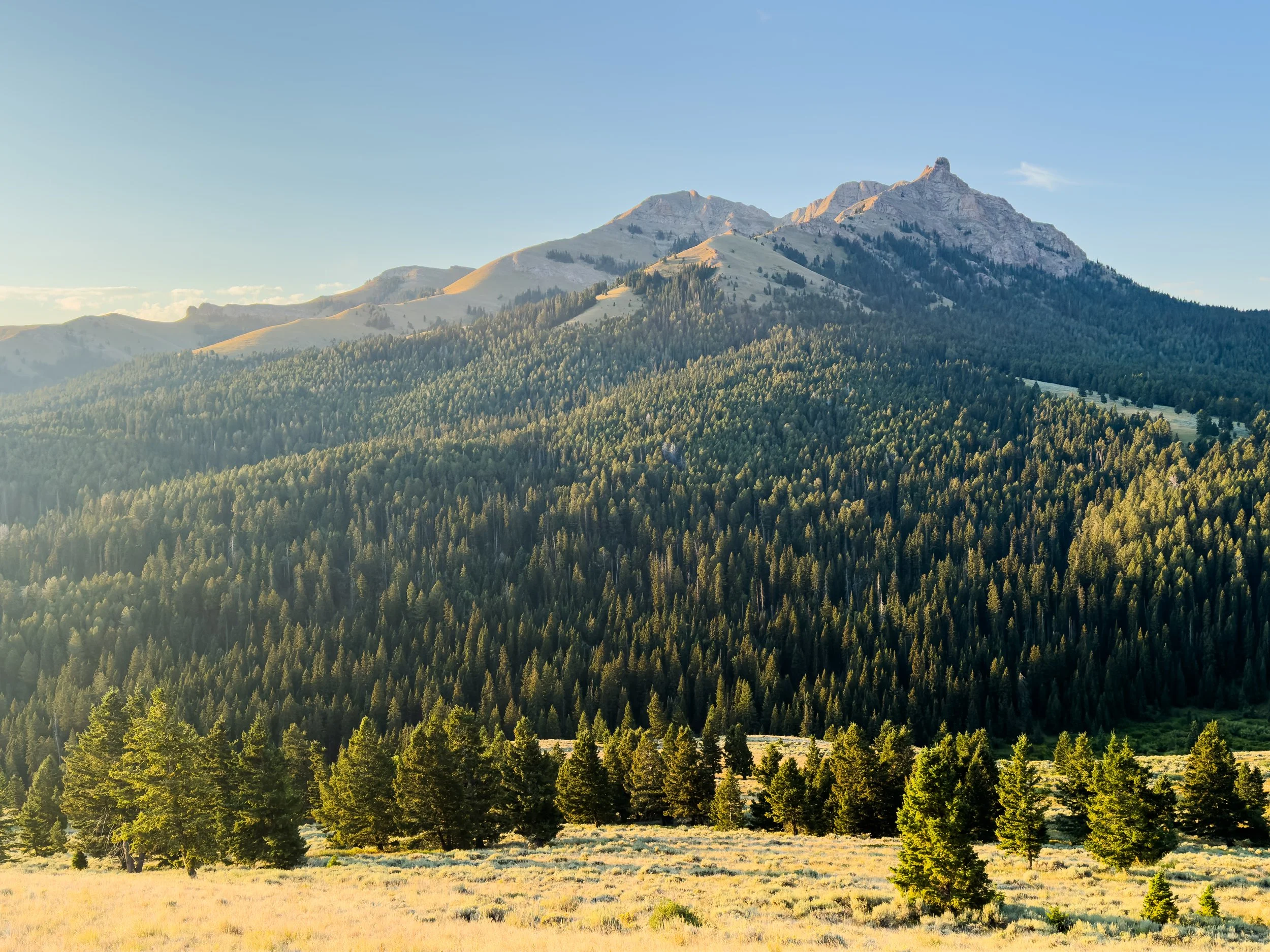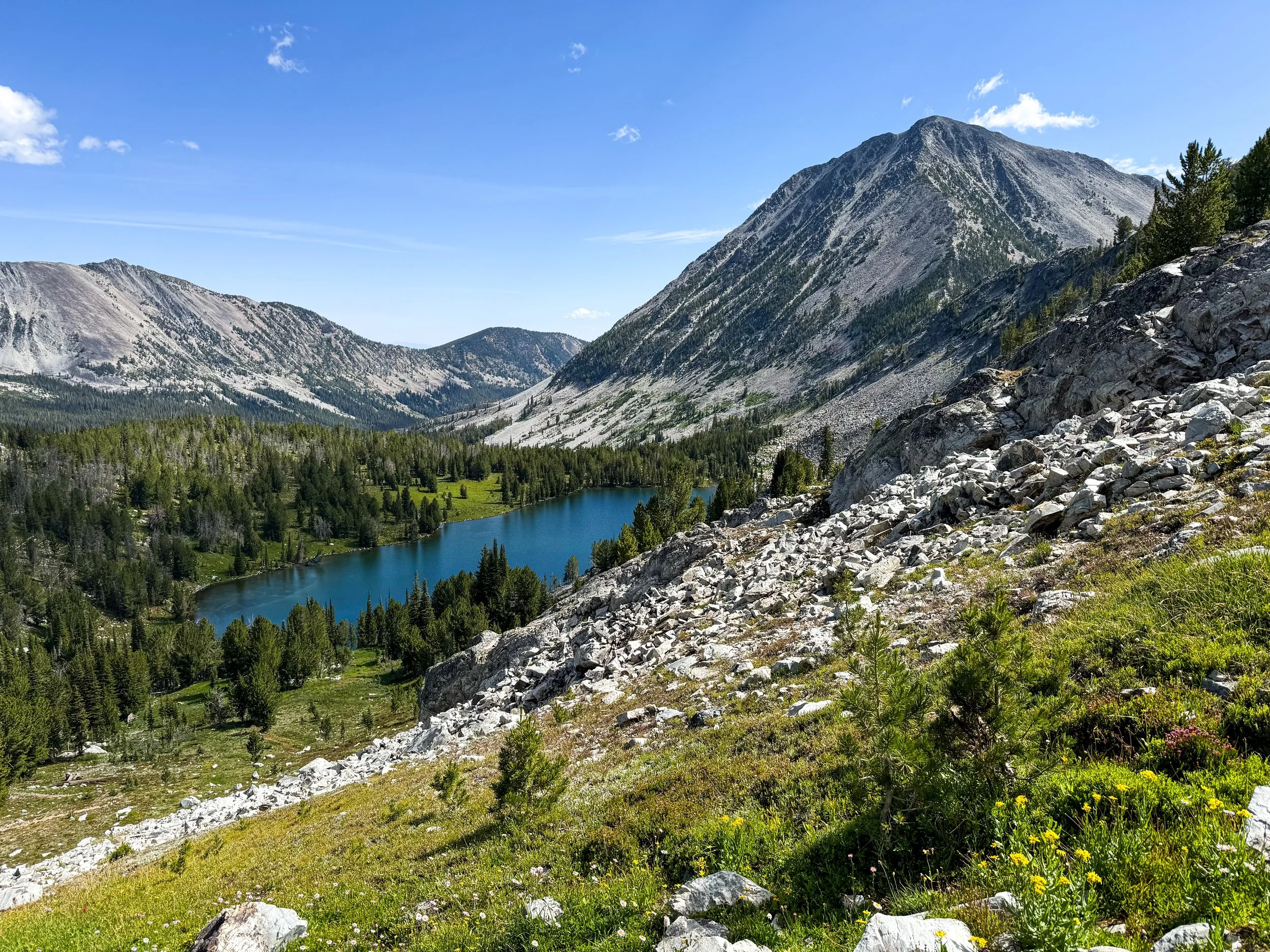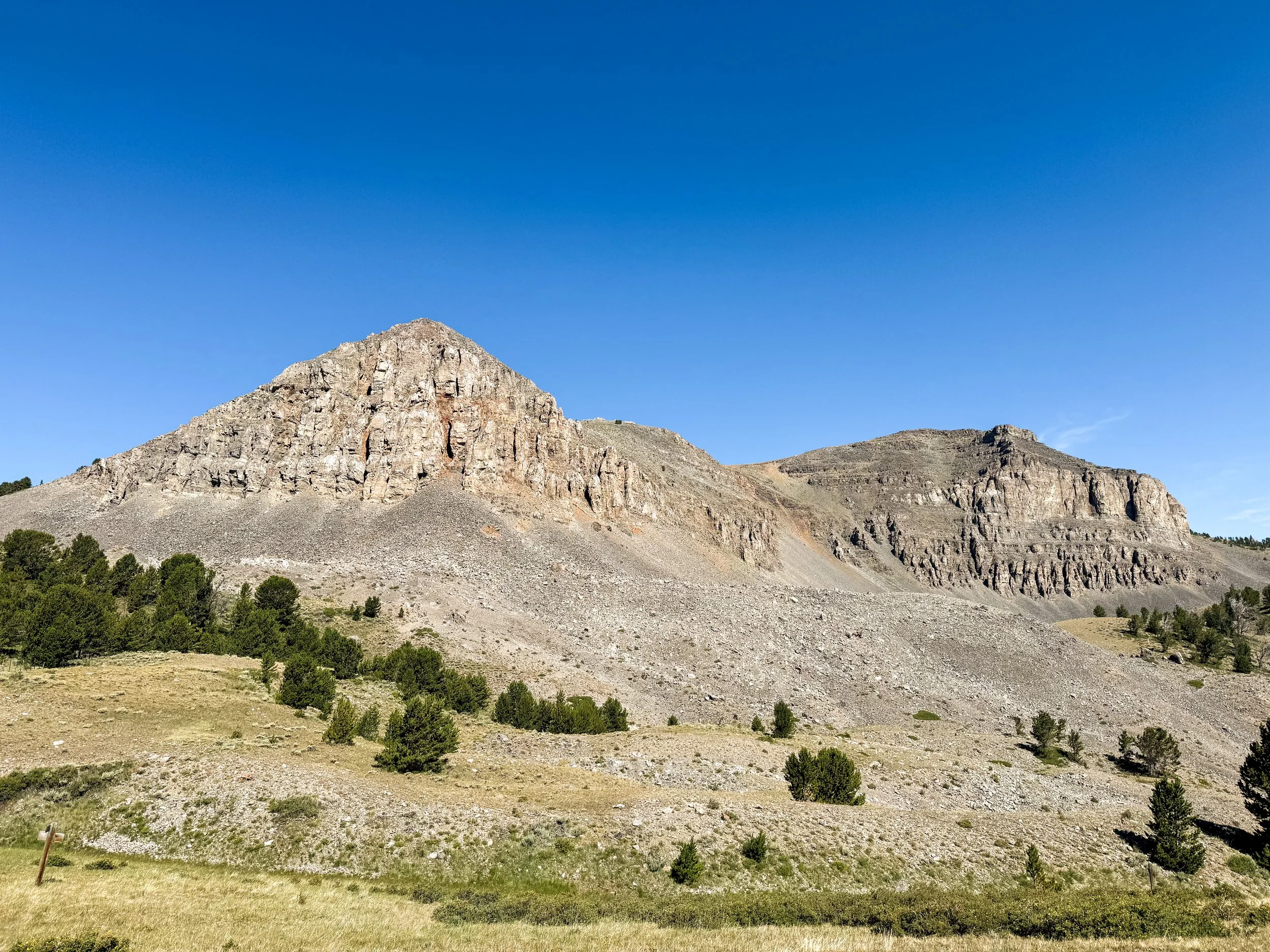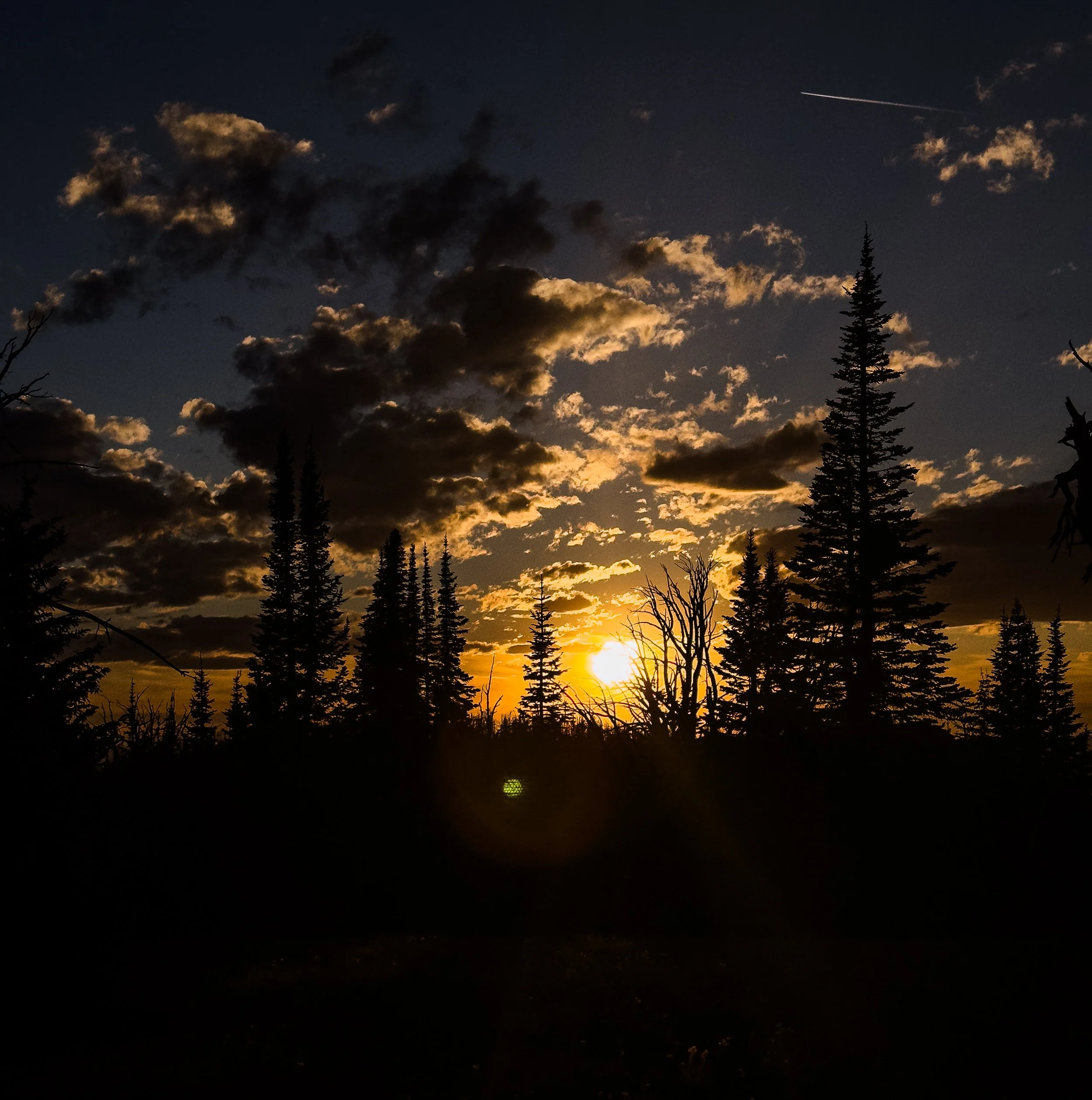10 Things I Hate About Idahontana
I hate your ATV tracks and all your bitey flies.
I hate the miles of scratchy sagebrush.
I hate your stormy skies.
I hate your scary sheepdogs and how you're lumpy all the time.
I hate you so much that you make me sick, it even makes me rhyme.
I hate the way you're always steep.
I hate it when you're dry.
I hate it when you make me sweat,
Even worse when you make me cry.
I hate it when you're lakes are pretty and the fact that your mountains are tall.
But mostly I hate the way I don't hate you,
Not even close,
Not even a little bit,
Not even at all.
— Julia Stiles when she hiked through Idahontana, probably
How could you hate a trail with views like this?!
South of the Pintlers, the CDT runs directly along the continental divide for around 400 miles. The divide here also happens to be the border between Montana and Idaho. For hundreds of miles, we saw border markers along the ridgelines and crossed into and out of Idaho more times than we could count. Eventually, we lost track of which state we were in and gave up trying.
A deep, rocky canyon somewhere in Montana (probably?)
Hikers call this whole section from Darby to West Yellowstone "Idahontana" and it is... Divisive. A lot of CDT hikers skip these miles and take a "cutoff" from Butte to Big Sky to keep a connected line of footsteps apart from the "official" trail (hikers call it the "red line", because it's a red line on our primary mapping app). We opted for the red line, but even among hikers who stick to the official route, this section has its detractors. In fairness, the section has massive vertical, hard miles on loose ATV tracks, and a whole lot of cows polluting the all-too-rare water sources. And yet, for us, the section also had its charms. It didn't quite manage to break us, so here are just a few of the reasons to hate Idahontana.
If this post doesn't make sense to you, you probably need to go back and watch this iconic movie. I have no idea if it holds up, but since it came out in 1999, my hopes aren't that high. You're on your own.
A classic view in Idahontana: mountains, sagebrush, lumpy grass, storm clouds overhead.
Stormy Skies
Idahontana has afternoon storm cycles like Colorado, but they're later in the day and very isolated. Every day around 4pm, we'd see dark clouds gathering around us and begin to hear thunder booming in the distance. Most days, we were lucky and the storms passed us by as we traveled along exposed ridgelines and through expanses of low brush with no trees in sight. We only had one really close call.
Terrifying storm clouds hanging over the ridge we're about to cross
Walking through endless miles of sagebrush high on the divide, we saw this storm bearing down on us. As the wind blew the clouds our way, we watched lightning strikes, first off in the distance, then just beyond the ridge, then on our side of the ridge, followed by a deafening thunderclap. For about three miles of open landscapes, we pushed on as fast as we could, trying to get to treeline before it hit us. The thunder was already overhead when the sky opened up, but we were only 500 feet from the edge of a forest. We made a run for it, dashing down the trail, then across a field to dive under a huge spruce just in time. We sat there, dry and cozy, and made dinner while the storm worked itself out.
Sticks and logs damming up the outflow of an alpine lake
Flies that Bite
This section has so many stunningly beautiful lakes. So many, in fact, that they've all managed to breed new and different types of horrific flies that all bite you and leave everything from giant welts to small but ridiculously itchy red dots. Were the lake views worth the amount of anti-itch cream we had to carry? You tell me.
Sunrise at Upper Slag-a-Melt Lake
Sunset and stillness, also at Upper Slag-a-Melt Lake. A perfect place to camp for the night.
Water, Water Every Nowhere, but and Not a Drop to Drink
With so many lakes, wouldn't you think we'd be able to find some water? Well, spacing is everything and in many days in the section all we had was sand and sagebrush, so we had some hefty water carries. Have I mentioned that water is heavy? We also pulled water from at least one creek absolutely surrounded by cows and everything cows create. Yuck.
One of the nicer water sources along the trail. Cow free!
Speaking of Sagebrush
Sagebrush is a hearty sort of bush. It does smell amazing, but walking through it is a scratchy experience. Idahontana has sagebrush for days and days and days. And days. Infinite supply of sagebrush.
Mountains rising in the distance behind endless miles of sagebrush
Less-Than-Wildlife
We had some of our best wildlife sightings on the trail in Idahontana. We saw a big bull moose, a coyote, a fox, and more sandhill cranes and other birds of prey. But there were also too many cows to count. On at least two occasions, I interrupted Jonathan to tell him there was a bear in the woods, only to realize it was a large black cow. At least once, we set up our tent next to an old, dried up pile of cow poop.
Our moose! He took a good look at us before deciding we weren't a concern and meandering off to continue snacking
One day, hiking up a ridiculously steep climb, we started hearing what sounded like a whole bunch of people yelling incoherently at the top of their lungs. It turned out to be hundreds of sheep scattered through the forest yelling incoherently at the top of their lungs.
Unfortunately, where there are sheep there are also sheep dogs, which can be aggressive toward humans near their flocks. The dogs soon located us and came out barking and growling. We pulled out our bear spray and backed away from them along the trail (fun fact: did you know that the original idea for bear spray came from the pepper spray mail carriers use for aggressive dogs? I had just learned this, so it was top of mind that the spray would be effective). The dogs followed us for a quarter mile or so until we got far enough from their herd.
An hour or two (and several miles) later, I started hearing the barking again. We came out to a clearing where the trail was blocked by another mass of sheep and goats. A real live cowboy (shepherd?) sat on his horse nearby, mule in tow packed with gear. We said hello, but he didn't acknowledge our presence at all, though he slowly moved the herd off trail, tossing a whip toward the dogs when they got a little too close to Jonathan.
Backcountry, Not Wilderness
Beyond the cows and sheep-jams, there are a lot of other ways Idahontana reminds you that although you're miles and miles from civilization, you're definitely not in the wilderness. We ran into dirt bikers and ATVs and saw broken pieces of vehicles scattered next to the trail in places. The ATV tracks roll up and over ever little bump of the ridgelines -- I assume it's fun on motorized transport, but as a hiker, it is punishing. It also sometimes leads to strange encounters.
More endless sagebrush showing off the folds in the land. You can just make out a dirt road at the bottom of the canyon as we descended toward Lima, MT
One day, I looked up the trail to see 9 clean, collared, brown and white spaniels all racing down at me through the woods, barking frantically. Alarmed, I froze and put my hand up to my bear spray. The dogs came up closer and crowded around, some barking, some losing interest and sniffing around. Confused, I looked around for an owner. After some minutes, a man came sauntering down the trail toward me. He had handgun strapped across his chest, but otherwise had no pack. No water. No food. Nothing but 9 hunting dogs and a handgun. This might have been weird anywhere, but we had literally hiked for days without seeing a road. He said he liked to run the dogs up here because there are rattlesnakes in the valley. Where did he come from?! We'll never know.
Not-A-Trail Trail
At least when the trail is an ATV track, you've got one trail surface at minimum. Sure, the wheels loosen all of the nice dirt into a gravelly nightmare, but you definitely know where it's going. Luckily, Idahontana has a remedy for every complaint, though. It loved to take us off of the trail and onto what I can basically describe as a field where someone walked once or twice. We traveled for miles across tussocky fields of hardy grass where there was just a faint trace of a trail. Its lumpy and hard to move quickly, and when it gets wet, the grass gets slick. Sometimes, the trail would run out and we'd just follow the post markers across the wide open landscapes. The views were stunning! The trail was... Not a trail.
Was it the cows?
It's not clear that Idahontana is to blame for Jonathan's giardia, but I'm going to go ahead and blame it anyway. It could have been a beaver or a moose. But something got him. And when giardia gets ya, it gets ya good. Jonathan started feeling sick just before Leadore, Idaho and had to hitchhike to the nearest clinic in Salmon, 45 minutes north. It was not the most fun side quest he's ever taken, but he got medication and is back to feeling like his old self as we head toward Yellowstone.


